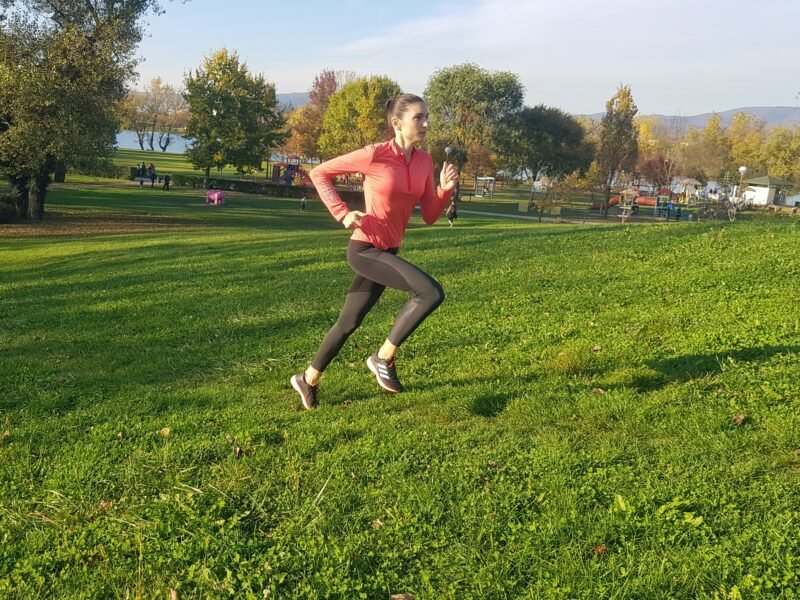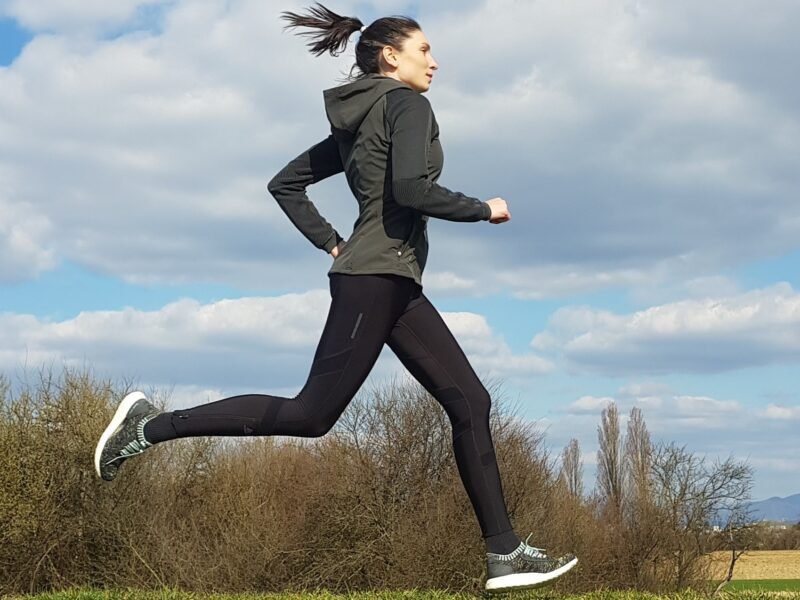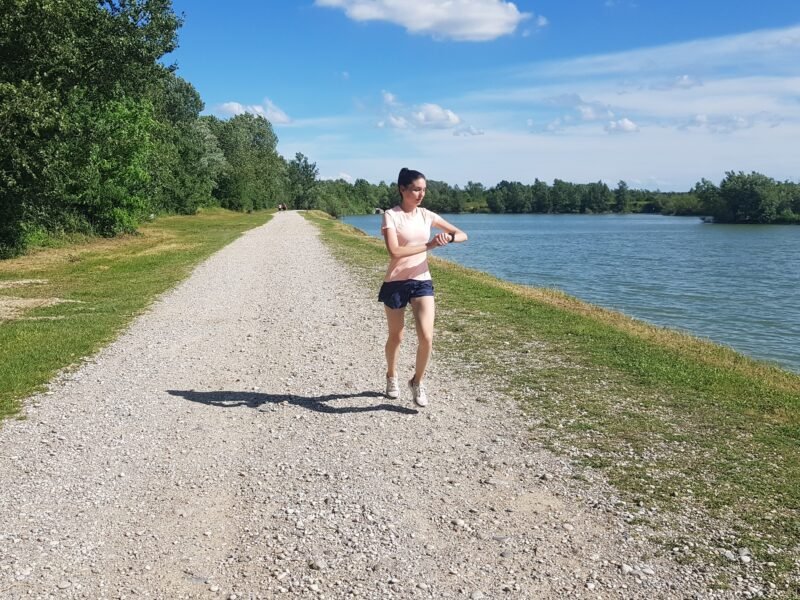Why Do I Run So Slow? (Top 19 Reasons)
Have you ever found yourself stagnating despite training hard? Or have you had a feeling that you are slower than before? It can be frustrating to not see any progress despite giving your best.
In this article, you will find the main reasons why you are running slow.
1. Not enough training variety
Diversity is important for progress. This means that you need to include different types of training and train different energy systems to induce certain changes and adjustments in your body.
To become faster and more efficient, combine different types of training, such as easy runs, fartlek, intervals, long runs, tempo runs, hill running, and strength training.
Likewise, to break the monotony in your workout, change your running routes.
If you always run the same route, training will gradually become boring and demotivating, which will negatively affect your ability to do your best.
If you do the same workout day after day, you will progress to a certain point.
However, if you don’t provide your body with new types of stresses and challenges, you will start stagnating and your form will decline.

2. Inappropriate weekly mileage
The reason why you run so slow could also be too low or too high weekly mileage.
It is important to find balance and try to get the best results with as few miles as possible.
If your weekly mileage is too low, you will not develop enough stamina and strength in your legs. You will come to a certain point, but you will not be able to progress further.
On the other hand, very high mileage can cause your results to stagnate. Besides increasing your risk of injury, this can cause overtraining and fatigue.
Despite all the training, you will not progress. On the contrary, your results will get increasingly worse because your body has not adapted to additional stress.
3. Inappropriate running pace
A common mistake runners make is running too fast on days when they should be doing low-intensity workouts.
Your subjective feelings can deceive you, so it is advisable to use a smartwatch.
Tip
Each workout has a purpose. No matter how good you feel, do your low-intensity workouts, and don’t run faster than you should.
4. Lack of specific types of long runs
Long runs are important for almost every runner, regardless of whether you are preparing for a 5K race or a marathon.
In addition to long slow distance runs, add other types of long runs to your training plan, such as progressive long runs and race-specific long runs.
By running a part of the long run at a race pace, you will increase your resistance to fatigue, and build self-confidence and mental strength.
Also, you will increase the percentage of fat you burn in relation to carbohydrates, and learn how to accelerate despite leg fatigue.
Read more: What is Considered a Long Run? (5 Long Run Examples)
5. Lack of speed training
If you want to be faster, you also have to train speed.
Do speed workouts, such as intervals, fartlek, or tempo runs once or twice a week.
Also, add strides to your workouts. By including strides into your training, you gradually accustom your body to running at a faster pace and your body gets used to the feeling of running fast.
Tip
If you have the opportunity, do intervals or tempo runs with other runners. It is much easier to get the most out of your workout by running in a group or with a training partner.
6. Lack of strength
The reason why you run so slow could also be because your muscles, tendons, joints, and ligaments aren’t strong enough.
It is advisable to do strength training two times a week.
Strength exercises improve your neuromuscular efficiency, and the communication between nerves and muscles, accelerating nerve impulses that send signals to muscle fibers.
That way, your muscles will become better coordinated for a more intense race or workout.
Furthermore, strength exercises correct the muscle imbalance and improve your running technique.
With the same amount of energy, you will be able to run longer and faster.
Read more: Strength Training for Runners (Top 19 Workout Exercises)
Besides strength training, another way to improve your running is by adding hill running to your training plan.
When you run uphill, you have to beat the slope against the resistance of your weight and gravity, and better activate your lower body muscles, which leads to their strengthening.
You work with your arms more intensely and thus you strengthen your upper body as well.

In addition, hill training improves your running form by removing unnecessary movements and improper posture during running, and increases cadence, stride length, and thus running economy.
Read more: Hill Training (8 Best Hill Running Workouts)
Tip
Hill training is not an adequate replacement for weight training or calisthenics. Therefore, leave space for strength training in your training plan.
7. Poor running technique
Another reason why you are so slow might be poor technique and running form.
Check if your stride is too long. How do you land your feet, do you swing your arms properly, do you bounce while you run?
Tip
Avoid overstriding because it costs you too much energy and reduces your efficiency. You should land your feet just below the knee, slightly in front of your center of gravity. This maintains speed and helps avoid braking. Likewise, your knee is protected, and the muscles and tendons in your leg allow you to cushion the impact of landing.
While running, it is important that you keep your body straight, slightly leaning forward. Look straight ahead.
Your arms are bent at the elbow at a 90-degree angle. Swing your arms in the direction of your movement. Do not clench your fists, always keep your palms open.
Pay attention to the position of the feet. Do not run on your heels. If you run fast, run on the balls of your feet.
8. Inadequate recovery
For progress, in addition to diversity, rest is also important. Adequate recovery is just as important as training.
Don’t neglect your rest days, no matter how good you feel. More training does not mean faster progress but, on the contrary, leads to injuries and overtraining.
Your muscles need time to recover no matter how fit you are.
9. Overtraining
Running increasingly slower despite continuous training is one of the signs of overtraining.
Overtraining appears when the body is exposed to excessive straining caused by insufficient recovery time, extremely tough or too frequent training, poor diet, or lack of sleep.
If you feel like you’re doing your best and training hard, while getting slower and slower, take a few days off.

10. Lack of sleep
Lack of sleep can negatively affect your running. Quality sleep is essential for recovery and adaptation to stress.
A study has shown that runners who slept longer than usual were faster and their rates of perceived exertion were lower.
Sleep needs vary from person to person. On average, a runner needs about 7 to 9 hours of sleep.
Read more: Why Can’t I Sleep After a Long Run? (12 Most Common Reasons)
11. Too much stress
Check your daily schedule. If you are currently going through a stressful life situation, such as changing jobs or the like, then it is not a good time to chase a personal best.
Your body is already under enough pressure and does not need additional stress. You are only inviting the risk of injury and overtraining.
During this period, use running to step back from your daily life.
Do easier workouts, don’t bother with pace, and listen to your body. There will be time for harder workouts and records.
12. Excess weight
The heavier you are, the more stress you put on your body as you have to carry more weight and put in more effort to run faster.
Increased body weight makes middle- and long-distance runners less efficient and less able to withstand high speeds over longer periods.
Likewise, being overweight increases your heart rate, raises body temperature, and puts more stress on tendons, joints, and bones, which increases the risk of injury.
Tip
If you decide to lose weight, be careful. Consult your doctor to perform detailed examinations. At the end of the day, your health is most important.
Read more: How Heavy Is Too Heavy to Run? (17 Tips for Heavy Runners)
13. Low-calorie intake
If you are in the middle of the training process and want to be faster, it is not the time to lose weight and count calories.
Insufficient calorie intake will bring about a lack of energy, which will in turn make you slower.
14. Insufficient amounts of carbohydrates
Carbohydrates are the primary source of energy during running. According to recommendations, they should make up 55% to 65% of the total energy intake from food.
If you do not consume enough carbohydrates, you may feel sluggish and lacking in energy, which will also affect your running results.
The higher the intensity of training, the greater the need for carbohydrates as energy sources.
The portion of carbohydrates that are not converted to energy is stored in our body in the form of glycogen.
Your glycogen stores can fuel around 90 minutes of activity. In case of complete depletion of glycogen stores, the runner feels severe fatigue and weakness. That is the moment when you “hit the wall”.
Tip
During more demanding workouts, carry energy gel, a chocolate bar, or dextrose candy with you to avoid hypoglycemia and energy loss.
15. Iron deficiency
Anemia can be the reason why you cannot achieve better results despite training.
Many runners struggle with anemia, especially female runners.
I have been struggling with anemia for many years. Some signs of anemia include shortness of breath and heavy legs.
Personally, I was helped by dietary supplements, reduced coffee intake (because caffeine impedes iron absorption), and focusing on the consumption of foods rich in iron, vitamin C, and folic acid.
Consult with your doctor and do blood tests to determine if you are deficient in iron, folic acid, or ferritin.
16. Dehydration
When your body lacks fluid, you become increasingly slower.
Water is an important nutrient that is vital for optimal performance, resistance to injury, and maintaining a normal body temperature.
It helps carry nutrients to your muscles and remove waste products from them.
On days when you have a more intense workout on your schedule, drink isotonic drinks to replace lost fluid and electrolytes.
Tip
The easiest way to check if you are dehydrated is by checking the colour of your urine. The brighter the colour of your urine is, the better hydrated you are. On the other hand, darker color indicates dehydration.

17. Bad weather conditions
Bad weather can negatively affect your running pace. Even if you put in the same amount of effort, you will be slower.
A study has shown that the optimal temperature for most runners is between 45-59 degrees Fahrenheit (7-15 degrees Celsius).
Everything colder or warmer than that optimal range will result in slower running times.
When you run in cold weather, that is, when the temperature is below 45 degrees Fahrenheit (7 degrees Celsius), your running pace will be slower because your body will expend additional energy on warming and maintaining body heat.
Likewise, the pace of running will be slower when running in the heat, i.e., when the temperature is higher than 59 degrees Fahrenheit (15 degrees Celsius).
In hot weather, your body puts extra effort into maintaining adequate body temperature through sweating.
Besides temperature, humidity also has a great impact on running. The more humid the air is, the harder it will be to run because your body will have a harder time sweating and cooling itself.
When the air is very humid, sweat evaporates harder and can lead to overheating heat stroke, or dehydration.
Additionally, wind also affects your running. When you run in strong winds, your pace becomes slower because you need to overcome greater resistance, and you get tired faster.
Tip
Running during bad weather can be demotivating, but listen to your body, adjust your pace to the conditions on the track, and choose the right clothes and running gear.
18. Demanding terrain
When you run on hilly terrain, you need a lot more energy to overcome resistance (the slope).
Your pace will be slower, and your exertion level will be higher than when you run on flat terrain.
It takes longer to run a certain distance when you run on softer surfaces because the surface cushions your every step and you need to activate more muscles to maintain balance.
19. Worn-out running shoes
Take care that your running shoes are not worn out and that you don’t run too many miles in them.
It is generally advised to change your running shoes every 300 to 500 miles.
However, when exactly to change your shoes depends on the surface you run on, whether you belong to the category of heavier runners, and your style of running.
Worn-out running shoes no longer provide quality support which increases the risk of injury and makes you feel more tired and less efficient running in them.

Matea Matošević
Hi, I’m Matea! I’m an Olympic Marathon Runner, founder, and writer behind OLYRUN.com. On this site, I provide help in the form of my knowledge and experience to all who love running and active living. Read more…

